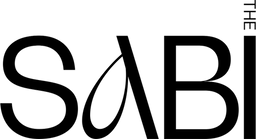By Hilary Metcalfe
Low milk supply is the number one reason women stop breastfeeding earlier than they want to. Yet the science shows something striking: true chronic low supply affects only 10–15% of mothers (Academy of Breastfeeding Medicine, 2019). For the rest, milk production is usually adequate, but myths, misinformation, and temporary challenges (which may lead to feeling defeated and failing - ALL VALID!) make mothers believe otherwise.
The main culprits behind perceived low supply include:
-
Poor milk removal: from a shallow latch, infrequent feeds, or formula supplementation that interrupts the supply-and-demand loop.
-
Illness or complications: mastitis, clogged ducts, or postpartum thyroid disorders can slow transfer or cause painful feeding.
-
Stress and hormones: cortisol delays oxytocin release, stalling let-down even when milk is present..
-
Misleading cues: soft breasts, frequent feeding, or low pump output are often mistaken for low supply, though none are reliable markers (Kent, 2007).
I wish I had known this sooner. During my own breastfeeding journey, I faced dehydration, underfeeding and stress-induced low supply, mastitis and stubborn clogged ducts. I would sit in bed with a pump, exhausted and feverish, staring at the bottles and panicking at how little milk appeared. My baby cluster-fed for hours, and I convinced myself she wasn’t satisfied. I almost gave up.
That experience changed me, not just as a mother, but as a product developer. It led me to dive deeply into the science of lactation and, eventually, to create The Breastfeeding Herbata: a herbal blend designed to support hydration, calm the nervous system, and replenish nutrients so mothers feel less depleted and more supported.
Here’s what I learned along the way about the biggest milk supply myths, and what science actually says.
Pump Output Does Not Equal Supply
One of the biggest mistakes I made was measuring my supply by the pump. After mastitis, I pumped constantly to “clear” ducts, only to panic when I saw barely an ounce.
Research shows that pump output is not a valid reflection of milk production. Babies stimulate both suction and compression, and their saliva even signals the breast to adjust milk composition, something no pump can replicate. Many mothers with abundant supply never pump more than a few millilitres.
The true indicators are your baby’s growth and nappies: 6–8 wet nappies a day and steady weight gain mean your supply is working.
Cluster Feeding Is Not a Sign of Low Supply
When my baby latched for hours on end, I was convinced it meant she wasn’t getting enough. In reality, it was biology.
Newborn stomachs hold only 5–7 ml on day one, and even by two weeks, they empty quickly. Frequent feeding - especially cluster feeding in the evening, is how babies naturally stimulate prolactin and increase supply (Neville et al., 2001).
Cluster feeding is exhausting, but it isn’t failure. It’s your baby training your body to keep up.
Stress Doesn’t Kill Milk, It Delays Let-Down
Mastitis left me panicked and tense. My breasts felt full, but milk wouldn’t flow. I thought stress had destroyed my supply.
The science tells a different story: stress doesn’t reduce milk production, but it does interfere with oxytocin, the hormone that triggers let-down. Elevated cortisol slows the reflex, making milk harder to release even when it’s present.
That means milk isn’t gone, it’s just locked. Gentle tools like skin-to-skin, warm compresses, deep breathing, or calming herbs (tulsi, oat straw, vervain) can help release it.
Breast Size Has Nothing to Do With Supply
At one point, I questioned whether I simply wasn’t “built” to breastfeed. But supply isn’t about size.
Breast size is determined by fatty tissue, not glandular tissue. Studies confirm that women with small breasts can produce abundant milk, while women with larger breasts can still struggle if milk isn’t removed frequently.
Capacity is about tissue function and demand, not cup size.
Formula Top-Ups Do Affect Supply
When feeding was too painful, I gave formula for a few days. Formula can be essential and life-saving, but it isn’t net neutral when it comes to supply.
Milk production runs on demand: the more milk removed, the more milk made. If a baby spends less time at the breast, stimulation drops, and production slows. Regular top-ups without compensating with pumping or extra feeds can gradually reduce supply. If supplementation is needed, pairing it with extra breast stimulation protects supply.
Bonus tip, use that extra to create a little back up freezer stash, and even what I didn’t end up using (my milk had a short shelf life, even when frozen) I used for baths on my daughter’s eczema prone skin in the depths of winter or swiped on my own face after an AHA peel as a hydrating skin treatment!
Herbs and Foods Can Support Supply
At my most desperate, I tried fennel tea and moringa capsules, wondering if I was just clinging to old wives’ tales. But the science is encouraging:
-
Fennel contains phytoestrogens that can increase prolactin and boost both milk volume and fat content (Othman et al., 2018).
-
Moringa has consistently increased milk volume in randomised controlled trials, sometimes within days (Estrella et al., 2000).
-
Nettle replenishes iron, calcium, and magnesium — minerals heavily depleted postpartum, indirectly supporting stamina and lactation.
But, my learning was that for maximum bioavailability, e.g. absorption and uptake by the body for fast effects, hot water infusion is best.
This evidence is why I co-developed The Breastfeeding Herbata. It’s not a miracle cure, but it brings together herbs that are backed by both tradition and science, in the best format possible, whilst supporting hydration and calm in the most bioavailable way.
Rethinking Low Supply
Looking back, what I thought was chronic low supply was actually a combination of mastitis, blocked ducts, stress, and myths. My body wasn’t broken, it was responding to temporary challenges and misinformation.
The real tragedy is that so many women stop breastfeeding not because they can’t make enough milk, but because myths convince them they aren’t enough or their body can’t do it. True chronic low supply exists, but it’s rare. For most of us, supply is more resilient than we think.
References
-
Academy of Breastfeeding Medicine. ABM Protocol #3: Supplementary Feedings in the Healthy Term Infant. Breastfeed Med. 2019.
-
Gatti L. Maternal perceptions of insufficient milk supply. J Nurs Scholarsh. 2008.
-
Kent JC. How breastfeeding works. J Midwifery Womens Health. 2007.
-
Neville MC, et al. Lactogenesis and milk production. J Nutr. 2001.
-
Heinrichs M, et al. Oxytocin, stress and lactation. Front Neuroendocrinol. 2016.
-
Othman A, et al. Fennel and lactation outcomes. Phytother Res. 2018.
-
Estrella MCP, et al. Moringa and milk production. Philipp J Pediatr. 2000.
ABOUT HILARY
Hilary is the Co-Founder of the SABI, a Holistic Nutritionist, natural, whole foods Chef, product developer and advocate for women getting to know their bodies, cycles and selves better. Born in Los Angeles, California and raised in Baja California, Mexico, she now lives in Los Cabos with her partner Kees, a curly-tailed rescue dog from Curacao, Flint and her rainbow babies Paloma and Bea.
HORMONAL & PROUD
Created as a brand to help women navigate the toughest moments in pregnancy, childbirth, postpartum — and practically every stage of life –– The SABI is changing the narrative around our hormones from one of taboo, embarrassment, and loneliness to awareness and even, pride. As more than a wellness brand, The SABI offers a carefully-crafted line of products to carry you through your hormonal journey, including rituals, supportive tools, and ancient herbal remedies that have been tested time and time again by women and now come backed by medicine. The SABI is a blend of science and nature conceived by women who have experienced the joys and deep struggles of bringing a child into the world, the pains of a heavy, difficult period, miscarriage, and difficulty conceiving.
We invite you to get to know your body and its cycles better –– to really understand what is going on inside. Learn to use your hormones to your advantage no matter your stage of life, and know that you can support and balance your hormone levels. We are here to help with the information, understanding and natural tools to support your body and the emotional process along with it.
DISCLAIMER
The SABI blog and articles are not meant to instruct or advise on medical or health conditions, but to inform. The information and opinions presented here do not substitute professional medical advice or consultations with healthcare professionals for your unique situation.
















